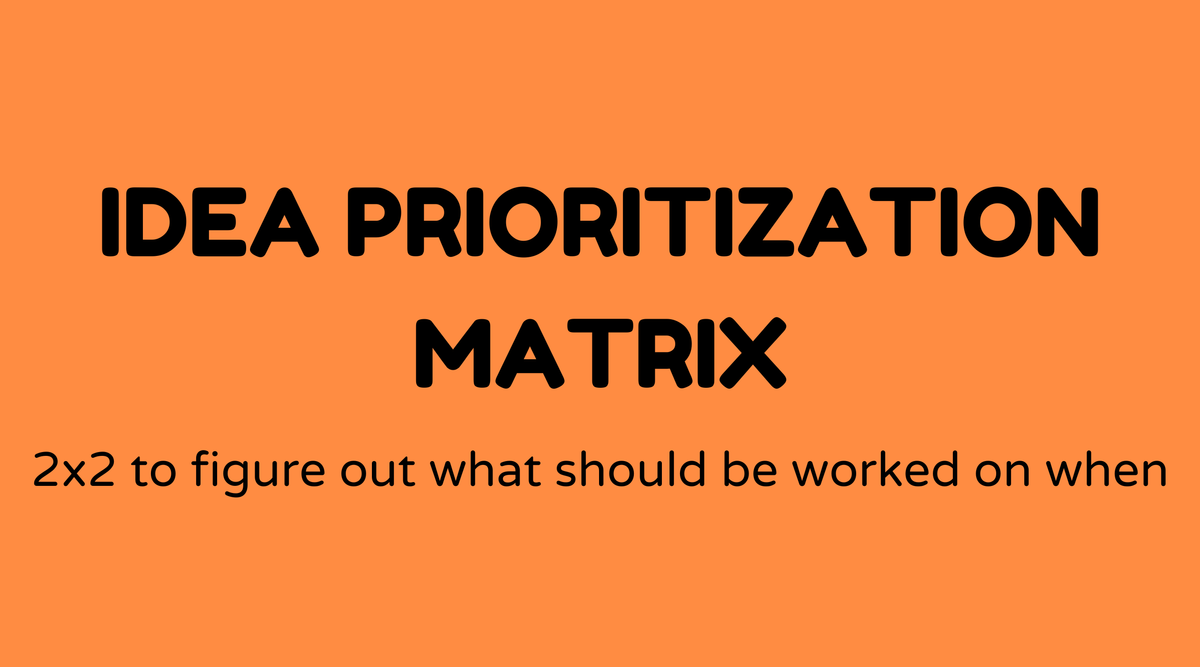Idea prioritization matrix

Overview of Idea Prioritization Matrix:
An idea prioritization matrix is a strategic tool created to evaluate and rank ideas or projects based on various criteria. It functions as a decision-making framework that assists businesses and teams in determining which ideas merit pursuit. By visually organizing this information in a grid format, stakeholders can make informed, objective choices.
The matrix ensures that resources, including time, finances, and personnel, are used wisely. Utilizing an idea prioritization matrix can significantly streamline the decision-making process.
Why Idea Prioritization Matrix Is Important:
Organizations often manage numerous ideas simultaneously. Without a clear, structured method for assessing these concepts, valuable resources may be squandered on less advantageous projects. The idea prioritization matrix provides clarity and direction.
A well-constructed matrix aligns projects with the organization’s strategic objectives, enhances collaboration by minimizing bias in decision-making, and ultimately ensures that only the most impactful ideas proceed. This process nurtures a culture of informed choices.
What is Idea Prioritization Matrix:
An idea prioritization matrix is fundamentally a chart commonly organized with two axes. The horizontal axis generally represents the effort, cost, or resources required, while the vertical axis indicates the expected impact or benefit. Quadrants in the matrix help categorize ideas based on these benchmarks.
The concept is adaptable. It can be tailored for various strategic objectives, such as concentrating on quick wins or long-term initiatives. Different types of matrices, like the Eisenhower Box and the RICE Scoring model, each provide a distinct method for ranking ideas.
How to Create an Idea Prioritization Matrix:
Building your own idea prioritization matrix involves several steps:
- Identify Criteria: Ascertain the key factors for assessment, such as cost, time, and impact.
- List Ideas: Begin with a comprehensive catalog of ideas or projects under consideration.
- Score Each Idea: Assign ratings based on the chosen criteria; a simple 1-10 scale works well.
- Plot the Matrix: Place each idea on the grid according to its score.
- Analyze the Matrix: Identify opportunities and prioritize ideas—those in higher-impact, lower-cost quadrants should take precedence.
Adjust as necessary. Preferences and organizational goals may evolve, so revise your matrix accordingly.
Examples of Idea Prioritization Matrix:
Many companies across different industries utilize the idea prioritization matrix. Here are some examples:
- Google employs a version of the matrix to invest in innovative projects.
- Procter & Gamble applies it for product development to determine which ideas meet consumer needs.
- Tech Startups commonly use matrix frameworks to allocate limited resources effectively.
These examples highlight the versatility of this tool across various industries and applications.
FAQs
How often should I update my idea prioritization matrix?
- It is advisable to review and refresh it quarterly or whenever notable changes arise in your business environment.
What tools can assist with idea prioritization?
- Software options like Trello, Asana, or Airtable can help visualize and manage your prioritization matrix effectively.
Do I need a large team to create an idea prioritization matrix?
- No, individuals or small teams can create and benefit from this matrix structure.
Can the matrix be applied to personal projects?
- Definitely, you can customize a simple version of the matrix for personal objectives and projects.
What are some main pitfalls to avoid when creating a matrix?
- Steer clear of overly complex criteria or disregarding subjective factors like team enthusiasm and expertise.
How does an idea prioritization matrix differ from a weighted scoring model?
- The matrix emphasizes visual plotting, while weighted scoring offers a more numerical ranking system.



